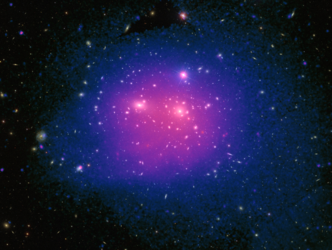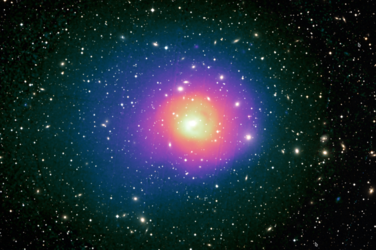Accept all cookies Accept only essential cookies See our Cookie Notice

About ESA
The European Space Agency (ESA) is Europe’s gateway to space. Its mission is to shape the development of Europe’s space capability and ensure that investment in space continues to deliver benefits to the citizens of Europe and the world.
Highlights
ESA - United space in Europe
This is ESA ESA facts Member States & Cooperating States Funding Director General Top management For Member State Delegations European vision European Space Policy ESA & EU Space Councils Responsibility & Sustainability Annual Report Calendar of meetings Corporate newsEstablishments & sites
ESA Headquarters ESA ESTEC ESA ESOC ESA ESRIN ESA EAC ESA ESAC Europe's Spaceport ESA ESEC ESA ECSAT Brussels Office Washington OfficeWorking with ESA
Business with ESA ESA Commercialisation Gateway Law at ESA Careers Cyber resilience at ESA IT at ESA Newsroom Partnerships Merchandising Licence Education Open Space Innovation Platform Integrity and Reporting Administrative Tribunal Health and SafetyMore about ESA
History ESA Historical Archives Exhibitions Publications Art & Culture ESA Merchandise Kids Diversity ESA Brand Centre ESA ChampionsLatest
Space in Member States
Find out more about space activities in our 23 Member States, and understand how ESA works together with their national agencies, institutions and organisations.
Science & Exploration
Exploring our Solar System and unlocking the secrets of the Universe
Go to topicAstronauts
Missions
Juice Euclid Webb Solar Orbiter BepiColombo Gaia ExoMars Cheops Exoplanet missions More missionsActivities
International Space Station Orion service module Gateway Concordia Caves & Pangaea BenefitsLatest
Space Safety
Protecting life and infrastructure on Earth and in orbit
Go to topicAsteroids
Asteroids and Planetary Defence Asteroid danger explained Flyeye telescope: asteroid detection Hera mission: asteroid deflection Near-Earth Object Coordination CentreSpace junk
About space debris Space debris by the numbers Space Environment Report In space refuelling, refurbishing and removingSafety from space
Clean Space ecodesign Zero Debris Technologies Space for Earth Supporting Sustainable DevelopmentApplications
Using space to benefit citizens and meet future challenges on Earth
Go to topicObserving the Earth
Observing the Earth Future EO Copernicus Meteorology Space for our climate Satellite missionsCommercialisation
ESA Commercialisation Gateway Open Space Innovation Platform Business Incubation ESA Space SolutionsLatest
Enabling & Support
Making space accessible and developing the technologies for the future
Go to topicBuilding missions
Space Engineering and Technology Test centre Laboratories Concurrent Design Facility Preparing for the future Shaping the Future Discovery and Preparation Advanced Concepts TeamSpace transportation
Space Transportation Ariane Vega Space Rider Future space transportation Boost! Europe's Spaceport Launches from Europe's Spaceport from 2012Latest

Hot X-ray glow from massive cluster of galaxies
Thank you for liking
You have already liked this page, you can only like it once!
Astronomers using ESA’s XMM-Newton space observatory have captured the X-ray glow (shown here in purple) emitted by the hot gas that pervades the galaxy cluster XLSSC006.
The cluster is home to a few hundreds of galaxies, large amounts of diffuse, X-ray bright gas, and even larger amounts of dark matter, with a total mass equivalent to some 500 trillion solar masses. Because of its distance from us, we are seeing this galaxy cluster as it was when the Universe was only about nine billion years old.
The galaxies that belong to the cluster are concentrated towards the centre, with two dominant members. Since galaxy clusters normally have only one major galaxy at their core, this suggests that XLSSC006 is undergoing a merger event.
Pictured in this view, where the X-ray data are combined with a three-colour composite of optical and near-infrared data from the Canada-France-Hawaii Telescope, are a multitude of other galaxies. Some are closer to us than the cluster – like the spiral galaxy towards the top right – and some are farther away. The image also shows a handful of foreground stars belonging to our Milky Way galaxy, which stand out with their diffraction spikes (a common artefact of astronomical images), while the small purple dots sprinkled across the frame are point sources of X-rays, many of them beyond the Milky Way.
The X-ray data were obtained as part of the XXL Survey, XMM-Newton’s largest observational programme to date, with follow-up observations performed by a number of other observatories around the world and in space. The latest XXL Survey release contains data for 365 galaxy clusters, tracing their large-scale distribution across cosmic history. These observations are helping astronomers refine our understanding of the Universe’s structure and evolution, and will serve as a reference for ESA’s future missions Euclid and Athena.
More about the XXL Survey: Tracing the Universe: X-ray survey supports standard cosmological model
-
CREDIT
ESA/XMM-Newton (X-rays); CFHT-LS (optical); XXL Survey -
LICENCE
ESA Standard Licence

X-ray and optical view of the Coma galaxy cluster

X-ray and optical view of the Perseus galaxy cluster

2XMM J083026+524133

Clusters of galaxies















 Germany
Germany
 Austria
Austria
 Belgium
Belgium
 Denmark
Denmark
 Spain
Spain
 Estonia
Estonia
 Finland
Finland
 France
France
 Greece
Greece
 Hungary
Hungary
 Ireland
Ireland
 Italy
Italy
 Luxembourg
Luxembourg
 Norway
Norway
 The Netherlands
The Netherlands
 Poland
Poland
 Portugal
Portugal
 Czechia
Czechia
 Romania
Romania
 United Kingdom
United Kingdom
 Slovenia
Slovenia
 Sweden
Sweden
 Switzerland
Switzerland


























